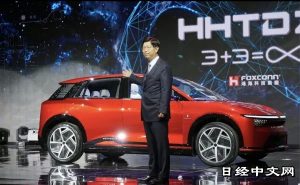Why did Mazda revive the rotary engine amid the wave of EV transformation?
6 min read
“The rotary engine is not just an engine. It is a symbol of challenges,” Mazda has once again installed the rotary engine as a “generator” in plug-in hybrid vehicles over the past 11 years. It is not used for propulsion but rather serves as a “behind-the-scenes” role in extending the range of electrically driven small vehicles. Why did Mazda choose to revive it in the era of electrification? There are three reasons…

Mazda’s Plug-in Hybrid Model “MX-30” Utilizing the Rotary Engine as a Generator
“The rotary engine is not just an engine. It is a symbol of challenges.” Over the past 11 years, Mazda has once again revived the rotary engine, this time as a “generator,” installed in plug-in hybrid vehicles (PHVs). In this role, the rotary engine is not used for propulsion but serves as a “behind-the-scenes” component, extending the range of small electrically driven vehicles. Why has Mazda chosen to resurrect it in the era of electrification? There are three reasons…
Amid intense global competition among automakers to achieve decarbonization, Mazda has brought back the rotary engine (RE) after 11 years. The company has incorporated the rotary engine as a “generator” in plug-in hybrid vehicles (PHVs), with the initial launch taking place in Europe. The rotary engine is not used for propulsion but plays a “behind-the-scenes” role in extending the range of small electrically driven vehicles. The underlying reason for this approach is Mazda’s apprehension about the commoditization of electric cars and its consideration of applying the rotary engine technology to new hydrogen-powered vehicles.
“The rotary engine is not just an engine. It is a symbol of challenges,” emphasized Mazda’s Executive Director, Hironori Inoue. In 1967, Mazda successfully mass-produced rotary engines on a global scale, with an annual output of around 300,000 units, propelling the company’s growth. Despite its lightweight and compact size, the rotary engine offered high power output, attracting numerous enthusiasts. However, due to challenges in meeting European emissions regulations, production of the rotary engine ceased in 2012.
Revived After 11 Years, Transformed into a “Generator” to Extend Range
In June, at Mazda’s Ujina No.1 Plant in Hiroshima City, this rotary engine became a new type of generator that improves fuel efficiency by 25%. On the production line of Mazda’s main SUV models such as the “CX-5,” they are assembling the plug-in hybrid version of the compact SUV “MX-30” equipped with the rotary engine. Similar to electric vehicles (EVs), it is motor-driven and has a pure electric driving range of 85 kilometers when fully charged. However, when the rotary engine is used as a generator, the total driving range can be extended to over 600 kilometers. After the MX-30 equipped with the rotary engine was first unveiled in Europe in January, there was a response from fans hoping for “derivative evolution, even though it’s a rotary engine used as a generator.”
This vehicle was initially available for reservations in January. The starting price in the UK is approximately £31,200 (about 285,000 RMB), the same price level as the all-electric version “MX-30” launched in 2020. There are plans for it to be released in Japan in the future.
In the past, vehicles equipped with rotary engines achieved Japan’s first overall victory in the Le Mans 24 Hours endurance race, enhancing the brand’s influence and accumulating sales of over 1.99 million units. After production was halted in 2012, Mazda has been exploring ways to preserve it within the company. However, Hironori Inoue revealed, “In terms of engine thermal efficiency, the low fuel consumption technology ‘Skyactiv’ has the advantage. There was a psychological conflict and difficulties.”
Given this situation, why has Mazda chosen to revive the rotary engine in the era of electrification?
Very Suitable for PHVs and Considering Promotion to Hydrogen-powered Vehicles
The first reason is that it is very suitable for plug-in hybrid vehicles (PHVs). The rotary engine is compact and generates power by rotating triangular rotors through repeated intake, compression, combustion, and exhaust processes. Compared to conventional engines that use piston motion, the rotary engine has a simpler structure and fewer components.
Plug-in hybrid vehicles require the installation of three sets of components: batteries, motors for driving in both directions, and a generator. The “MX-30” is a compact car with limited space for core components. By using a larger motor than that of all-electric models, the compact plug-in hybrid model equipped with the compact rotary engine as a generator achieves an increase of nearly 20% in maximum output power. Although the rotary engine’s fuel efficiency is relatively poor at low speeds, when installed in plug-in hybrid vehicles, it can be used for charging during high-speed power generation, achieving optimal fuel efficiency (Hironori Inoue).
The second reason is to promote zero-emission vehicles (ZEVs) that do not emit carbon dioxide during operation. Inoue states, “The structure of the rotary engine is advantageous for hydrogen.” Unlike conventional engines, the space where the rotary engine “injects” fuel and “burns” fuel is different. This design makes it convenient to manage hydrogen, which can naturally ignite at high temperatures, ensuring safety. This technology can be applied to hydrogen engine vehicles or fuel cell vehicles (FCVs).
Mazda was the world’s first company to release and sell a rotary engine-powered hydrogen car in 2006. Inoue says, “To achieve carbon neutrality, it is crucial to use internal combustion engines with various clean energy sources,” and they will explore the possibilities of new types of vehicles.
In addition, technologies such as energy regeneration during deceleration and motor drive in plug-in hybrid vehicles are also beneficial for the development of all-electric vehicles. Starting from 2028, Mazda will increase dedicated models, and by 2030, all-electric vehicles are projected to make up 25% to 40% of the company’s global sales.
Concerns About Losing Uniqueness in the Electric Transformation
The third reason is that Mazda is concerned about the commoditization of cars in the electric transformation.
In mid-July, Mazda’s President, Akira Marumoto, stated, “We are not going to be the leader in the transition to all-electric vehicles; we will be willing followers.” Mazda is a medium-sized manufacturer with a global sales volume of about 1.1 million vehicles in 2022. Large companies are making massive investments in the all-electric field, and both the American company Tesla and Chinese manufacturers are competing to reduce prices on electric cars with an annual production of 500,000 units. The question of “Mazda not having its unique value” (President Marumoto) is becoming increasingly strong.
Koji Endo of SBI Securities in Japan pointed out, “There’s the technology but no way to recoup the investment.” The lackluster performance of the all-electric version of the “MX-30” has led some to express hopes to “equip the rotary engine in more popular Mazda models” (sales outlet manager).
In the early 1960s, the rotary engine was considered an “ideal engine,” but various manufacturers faced issues like the “demon’s claw marks,” referring to the engine’s wear and tear. At that time, Mazda’s bet on the rotary engine was deemed “necessary for survival,” and it successfully achieved mass production. Today, in the midst of rapidly changing competitive dynamics, Mazda must once again make a difficult decision.
Significant Growth of Plug-in Hybrids in the Chinese Market
In the medium term, the global plug-in hybrid market is expected to expand. AlixPartners predicts that by 2027, the global new car sales will reach 93.7 million units, with all-electric vehicles accounting for 23% of the total and plug-in hybrids accounting for 7%. The plug-in hybrid market is projected to reach 6.5 million units by 2027, growing by approximately 60% compared to 2023.
According to the International Energy Agency (IEA), the plug-in hybrid market in China has grown significantly, reaching about three times the volume of 2021 in 2022. The Chinese government mandates manufacturers to include plug-in hybrids in a certain proportion of new energy vehicles produced, contributing to the growing market.
However, the improved performance and declining prices of all-electric vehicles pose challenges. The main consumer group for plug-in hybrids is environmentally conscious. While all-electric vehicles with larger battery capacities often have higher prices, consumers are choosing plug-in hybrids for better value. But as the production of all-electric cars continues to increase, their prices are decreasing, reducing the advantage of plug-in hybrids.
Swedish automaker Volvo plans to transition all new car sales to all-electric vehicles by 2030 and will cease the development and manufacturing of internal combustion engines, including plug-in hybrids. Europe, the Americas, and China are strengthening policies to promote zero carbon emissions from automobiles. Mazda’s challenge lies in quickly bringing its proprietary technologies to the market for all-electric and hydrogen-powered zero-emission vehicles.




